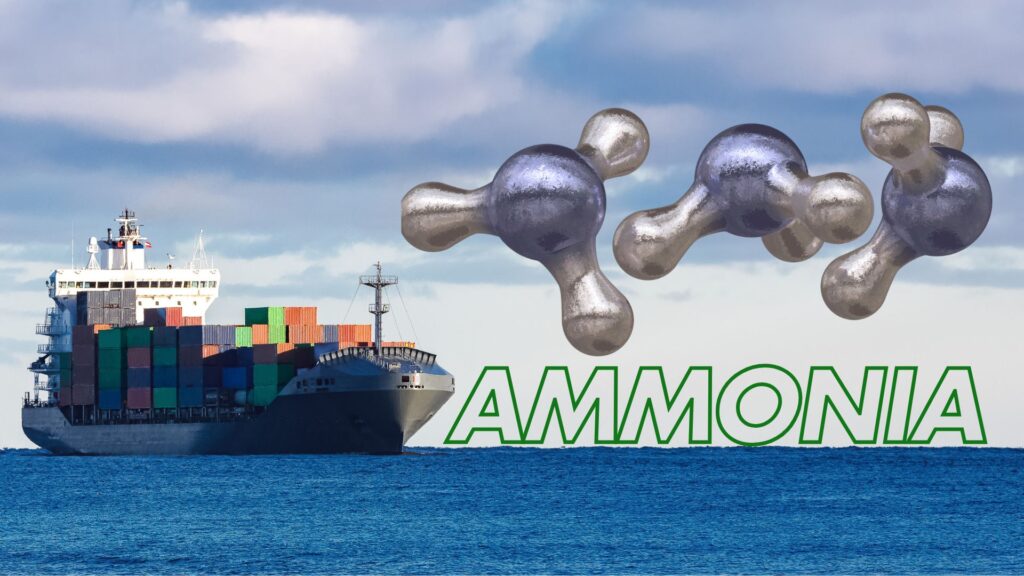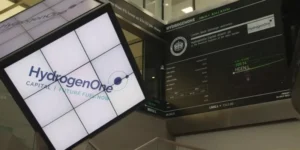Ammonia Breakthroughs Could Turn The Tide For Green Shipping – Hydrogen Fuel News

Redefining the Waves with Green Shipping Technologies
Maritime transport is vital to the world’s economy, enabling international trade, commerce and facilitating the movement of goods and resources across the whole globe. However, the shipping sector is estimated to be the source of 3% of the carbon dioxide (CO2) emitted worldwide since it is still based on the exploitation of cheap and low-grade fossil fuels such as heavy fuel oil (HFO) and marine diesel oil (MDO). Nowadays, the marine industry is facing challenges in adopting new technologies and operational practices to comply with the increasingly strict environmental regulations and to achieve the GHG reduction targets set for the 2050 by the International Maritime Organization (IMO).
Among the broad spectrum of technology and fuel solution pathways in front of ship designers, operators and owners, ammonia (NH3) has been identified as potential marine fuel that could enter the global market fairly quickly and drive the sector’s sustainable transition.
Ammonia: a promising marine fuel
Ammonia is already well-known to the maritime field since it is widely transported as cargo in gas carriers to be used as fertilizer in the food industry. Currently, NH3 is large-scale produced in the Haber-Bosch process by combining gaseous hydrogen and nitrogen (N2+3H2=>2NH3), accelerated by the presence of a metal catalyst.
At atmospheric pressure and ambient temperature, it is a clear and colorless gas, lighter than air with a distinctive pungent smell. At -33°C under atmospheric pressure or if pressurized to 8.6 bar at ambient temperature, NH3 becomes a liquid, making transport and storage onboard vessel easier. In this regard, the main advantages that make liquefied ammonia a suitable energy vector to lead the decarbonization of the maritime industry include:
❖ Carbon free. The key advantage is its status as a zero-carbon fuel when produced renewably, enabling ships to eliminate CO2 emissions;
❖ Availability. The atmospheric nitrogen (N2), one of its molecule’s precursors, is widely and freely available;
❖ Storage. As a chemical commonly traded commodity, NH3 can be transported at practical pressure and temperature, gaining benefits from its well-developed terminal network;
❖ Improving technology. Ammonia can be burnt directly in Internal Combustion (IC) engine which are closer to scale-development and to a higher readiness steps than other alternative fuel’s solutions. Ammonia or Hydrogen: what to choose?
Since the ammonia is produced from the same process as hydrogen, it is reasonable to question whether H2 can be used directly as a marine fuel instead of NH3.
In order to exploit hydrogen’s fuel potential and minimise the space required onboard a vessel, it would be necessary to high compress (from 250-700 bar) or liquefy (at -253°C) it.
There is a near consensus that ammonia is a preferred energy carrier compared to hydrogen due to its higher volumetric energy density and boiling temperature. Indeed, even in its liquid state, the storage of hydrogen would require five times more volume compared to petroleum-based fuels (MDO) while liquefied ammonia is just around 2.9, carrying the same energy content.
Ammonia Main Challenges…
However, there are challenges to be faced before ammonia can become commercially available as marine fuel:
- Toxicity. Ammonia is toxic to both people and aquatic life; if inhaled at high dosages, it can be lethal and lead to adverse health impacts, including severe skin burn, eye damage and respiratory failure; • High Corrosiveness. Ammonia by reacting with moisture can corrode copper, brass, zinc and various alloys forming a greenish/blue colour. Consequently, the materials selection as well as the design and arrangements of the ammonia fuel bunkering, containment and supply system must consider potential for Steel Corrosion Cracking (SCC) ;
- Hard Ignition. Ammonia requires a large amount of energy from either a pilot fuel or another “hot source” to be ignited;
- High Flammability. A leak of compressed liquefied ammonia could lead to flash evaporation, a hazard that needs precautions to be taken where a dense gas might form close to working areas. Therefore, prevention of ammonia gas release and dispersion will be an important safety action during the ships’ operations;
- Emissions. Although ammonia is a zero-carbon fuel, its combustion may produce nitrous oxide (N2O), a highly harmful gas with a global warming potential of 270. IC engines that burn ammonia are therefore expected to require additional catalysis to control N2O emitted in the atmosphere;
- Lack of Regulations. International maritime safety regulations on ammonia fuel handling are still under discussion at the IMO, imposing a direct barrier for its adoption. The process for establishing guidelines would take some years, even though at regional level initiative is taking shape, as in the EU with the ‘Fit-for-55’ program.
Conclusions 
To date, currently there are no ships in service fuelled by ammonia but, as engine-makers have reported significant progress in ammonia marine duel-fuel engines in the past years, interest is beginning to grow. IRENA estimates a scenario in which the maritime industry is expected to consume 197 million tonnes of ammonia as fuel by 2050. Therefore, in a future where the shipping field may not be dominated by a single sustainable fuel, but a combination of different solutions, certain ammonia will play a key role in the process of decarbonising that sector.









